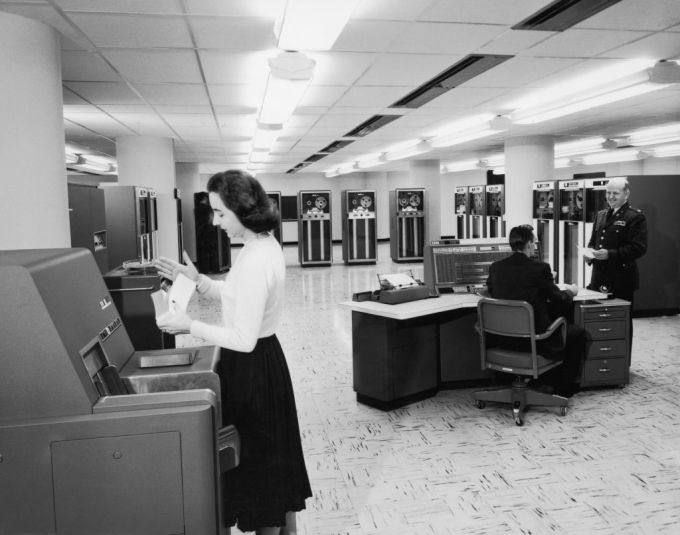When you think of mainframes, you probably have a mental picture from an old movie, with punch cards and a computer that takes up an entire large room. But the mainframe still lives, and is a viable product at IBM. Today, it’s much sleeker and more powerful, and helps run data-intensive workloads for the world’s biggest industries, with use cases that might not be quite ready for the cloud.
Today IBM unveiled the latest mainframe in its storied history, the z16. It runs on the IBM Telum processor, which the company released last summer. The chip has been optimized to run massive workloads, processing 300 billion high-value financial transactions per day with just one millisecond of latency, according to the company.
That’s for customers who have a serious need for speed with heavy volume. The primary use case the company is selling for this monster machine is real-time fraud prevention. Financial institutions in particular are the target customers, but Ric Lewis, SVP for IBM systems, says it’s for just about any company processing a lot of business-critical transactions.
“It’s still banking, insurance, public sector, government, healthcare, retail — anywhere where you really have high transaction throughput, where you need security, reliability and the world’s best transaction processing,” Lewis said.
That comes down to the largest companies in the world, including two-thirds of the Fortune 100, 45 of the world’s top 50 banks, eight of the top 10 insurers, seven of the top 10 global retailers and eight out of the top 10 telcos, which are using mainframes, according to data provided by IBM. Most of those machines come from IBM.

Circa 1955, a female office worker sorts punch cards as two men talk near the console of an IBM 705 III mainframe computer, owned by the US Army, 1950s. (Photo by Getty Images/Getty Images)
“What’s cool about this latest announcement is we’ve now integrated AI inferencing particularly optimized for fraud detection in real time inside the chip,” he said. The difference here is that there is usually a lag between the fraud being detected and the consumer learning about it. IBM wants to change that with the z16. “Now, that set of customers can access data [that fraud could be occurring] in real time inside the chip. It’s all enabled by our own VLSI chip called Telum that we announced last [year], but this will be the first system shipping with that chip.”
Lewis says that while the cloud has been great for the industry, he believes there is a whole class of companies and applications where the cloud just isn’t a viable option, and for some percentage of those, a powerful mainframe like the z16 could be the answer.
“There was a time when people would say that everything is going to end up in the cloud, and I think what you’re seeing more recently is people believing data is everywhere. It’s not all going to be in the cloud. And really the evolution of the whole compute landscape is more towards specialized infrastructure,” he said.
And of course, in Lewis’ view that involves specialized hardware like his company’s z16. The company’s mainframe sales were down 6% as of its most recent earnings report, but customers might have been waiting for the technology recycle that comes with this announcement before buying any additional units.
The company said that the z16 will be available for all customers on May 31st, and it could be a test of Lewis’ view that some workloads will remain in a private data center running on mainframes for some time to come.















 English (US) ·
English (US) ·